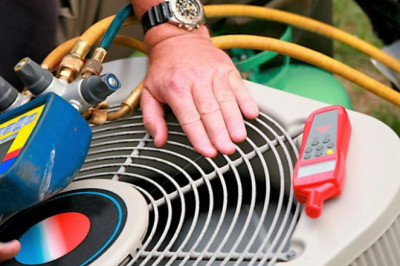views

Variable rate fertilization (VRF), variable rate seeding (VRS), variable rate irrigation (VRI), variable rate crop protection chemical (VRC), and others are some application segments in the global variable rate technology market. During the projected period, VRF is anticipated to have a dominant market share in the global variable rate technology market. North America, South America, and China are likely to have high CAGR growth in VRF, as these countries are focusing on avoiding excessive fertilization to retain soil fertility. VRS is predicted to acquire incremental market share in the global variable rate technology market from 2021 to 2027 due to its rising adoption to offset growing agricultural seed costs.
The input for variable rate controller is feasible by adopting either of the two technologies, i.e., map-based and sensor-based technology. The map-based technology is expected to hold dominating market share in the global variable rate technology market during the forecast period. This is mainly due to inexpensive initial investment costs (compared to sensor-based technology) and reliable results from using numerous data sources to create the prescription map.
The map-based technology is expected to have incremental market share in developing countries such as India, Brazil, and others as it makes input data collection in VRT affordable through the use of satellite imagery. Sensor-based technology, on the other hand, is predicted to gain market share in developed nations such as the U.S. and the U.K. due to its accurate and time-efficient output generation.
North America and Europe are expected to register the highest demand for variable rate technology during the forecast period. Variable rate technology is anticipated to grow rapidly in these regions because of rising agricultural input costs, particularly fertilizer costs, and growing average field size. Growing average field size or small farm consolidation would pave the way for VRT deployment by shortening the VRT payback time due to large-scale farm productivity.
The scope of the report includes VRT hardware such as Global Navigation Satellite System (GNSS) receivers, sensors, variable rate control systems and display, flow and application control systems, handheld computers, and drones in variable rate application. The VRT software covered within the report scope is navigation and digital mapping software. In addition, the scope of the report comprised hardware and software maintenance and services.
Download the Sample Report of Variable Rate Technology Market at: https://bit.ly/3e3NP58
The global variable rate technology market research study offers a broad perspective on the analysis of the industry. The research is based on extensive primary interviews (in-house experts, industry leaders, and market players) and secondary research (a host of paid and unpaid databases), along with the analytical tools that have been used to build the forecast and the predictive models.
Precision agriculture technology can be categorized into guidance, recording, and reacting technology. Variable rate technology (VRT) is the only reacting technology in precision agriculture. The VRT takes real-time input from guidance and recording technology and reacts timely in agricultural input applications.












